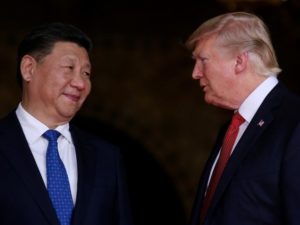
…may rise above $70 per barrel for Brent
By Chioma Obinagwam.
Oil prices rose by around one percent on Monday, on the heels of trade negotiations between the United States and China (the two biggest economies in the world) aimed to ease the trade tension between them.
Also, the surge in the price is not unconnected to supply cuts by major oil producers (OPEC).
The Organization of Petroleum Exporting Countries (OPEC) and some allied oil producing countries, including Russia, had agreed at the meeting held in Vienna, Austria, on the 7th of December, 2018, to cut production by 1.2 barrels per day (bpd).

Reacting, Ann-Louise Hittle, Vice President, Macro Oils, at Wood Mackenzie, said would tighten the oil market by the third quarter (Q3) of 2019 and cause prices to rise back above $70 per barrel for Brent.
Brent crude futures were at $57.61 per barrel up 55 cents, or 1 per cent, from their last close, while the U.S. West Texas Intermediate (WTI) crude oil futures were at $48.49 per barrel, up 53 cents, or 1.1 per cent.
The United States and Beijing have been locked in an escalating trade spat since early 2018, raising import tariffs on each other’s goods. The dispute has weighed on economic growth.
“The start of 2019 brings an even greater sense of downside risk around our global growth forecast…(and) the three percent global growth pace we have been anticipating for the next two quarters looks increasingly challenging,” U.S. bank J.P. Morgan said in a note late last week.
OPEC oil supply fell in December by 460,000 barrels per day (bpd), to 32.68 million bpd, a Reuters survey found last week, led by cuts from top exporter Saudi Arabia, but not all factors are pointing to higher prices.
In the United States, crude oil production stayed at a record 11.7 million bpd in the last week of 2018, according to weekly data by the Energy Information Administration (EIA) released at the weekend
That makes the United States the world’s biggest oil producer ahead of Russia and Saudi Arabia.
Record output is also swelling U.S. fuel stockpiles.
Crude oil inventories rose by 7,000 barrels in the week ending December 28, to 441.42 million barrels.
Distillate and gasoline stocks, however, rose by a whopping 9.5 million and 6.9 million barrels, to 119.9 million and 240 million barrels respectively, the EIA data showed.
Brent crude per barrel stood at $56.82 as at January 7, 2019.




